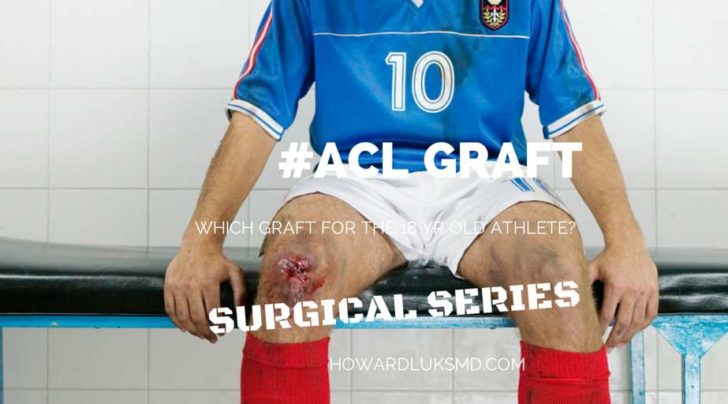
When you are considering ACL Surgery, choosing which ACL replacement graft to use is not always an easy decision.
This will be the second post in our “Straightforward Diagnosis, 5 Professional Opinion Series”. Our first post focused on our approach to an 18 year old athlete and how we determined who needed to consider ACL surgery and who didn’t.
Once the decision has been made to proceed with ACL surgery, the surgeon, and you need to determine which graft would best suit your needs. Our choices include your own tissue (autograft) or cadaveric tissue (allograft). Within the autograft category we have the choice of using your:
- Patella Tendon
- Quadriceps Tendon
- and Hamstring Tendon(s).
Choosing which graft is more appropriate for your needs is not always straightforward. Let’s see what our panel of experts says.
Which ACL graft Would You Choose to Reconstruct the ACL of an 18 year old Athlete?
S.S : My preference in young patients is to use autograft. Many recent studies, including the recent MOON studies, have demonstrated that autograft is superior to allograft, with significantly decreased risk of re-rupture, in a young athletic population. The risk of re-rupture approaches equal at about age 35. My graft of choice for this patient would be a semitendinosis autograft. Harvest of this graft has lower risk and morbidity than bone-patellar tendon graft. There is a lower risk of persistent anterior knee pain and patella fracture with hamstring graft. Most studies have shown equivalent functional results, re-rupture rates and return to sport when comparing hamstring to patellar tendon grafts.
D.G. : I am a strong proponent of using autografts for young, active patients. Generally I tend to like patellar tendon grafts, but I would be fine with either a patellar tendon autograft or hamstring autograft. I do tend to worry a little bit about hamstring grafts in females due to the possibility of worsening the quadriceps:hamstring imbalance. I try to avoid allografts in young active patients due to a higher rate of reinjury that many studies in recent years have shown.
D.O. : I would typically use HAMSTRING AUTOGRAFT as my graft of choice. While bone-patellar tendon-bone autograft is another good choice, the disruption of the patellofemoral mechanism can increase chances of later patellofemoral pain and arthritis, down the line. I have some experience with quadriceps tendon allograft, and this would be another good choice as well.
J.B. : No Allografts for primary isolated ACL reconstruction in any active (usually all) pts under 45 yo. Too much data showing higher rates of failure for me. I find autografts are easy to harvest. Offer BPB and quadrupled HS autografts with preference for HS. My interpretation of the data is both provide very similar outcomes. BPB higher rate of anterior knee pain, kneeling pain, earlier PF OA and risk of patellar Fx. I’ve seen all of them except fractures in my patient (seen fractures in others). I see very little, if any, complications with HS and prefer that. No experience with Quad tendon.
S.M : Most of my experience is with bone patella tendon bone AUTOGRAFT. I recommend this graft for most of my patients. Other than the slight loss of sensation around the incision I have not had patients complain of significnant anterior knee pain. I believe this is due to the details of post op therapy which focuses on patella mobility, quad tendon stretching and maximizing knee extension. I do use bone patella tendon bone ALLOGRAFT for less active older patients (older than 40) especially if the patient cannot afford to be off work.
When discussing your ACL surgery with you, your surgeon should discuss the graft choices available, and which graft they feel is best to suit your needs.
Our panel is in agreement:
- Allografts (cadaver) grafts are probably a poor choice in an athletic population.
- Hamstring grafts are a good choice, but might cause weakness – if both of them are used.
- Patella tendon grafts are also a strong choice, but might raise the risk of residual pain in the front of the knee.
Which ACL graft is best for you? That’s a good question to ask your surgeon, and hopefully these experts have given you some key points to review with your experienced ACL surgeon.
The participants :
D.G.: Dr David Geier : Twitter: @DrDavidGeier ; Website
J. B.: Dr Jeff Berg: Twitter: @DrJeffBerg ; Website
D.O.: Dr Derek Ochiai: Twitter: @DrDerekOchiai ; Website
S.M.: Dr. Steve Mora: Twitter: @myorthodoc ; Website
S.S: Dr Scott Slattery: Twitter: @sportscaduceus ; Website:


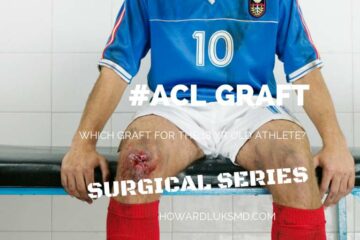

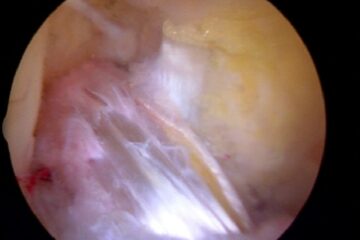
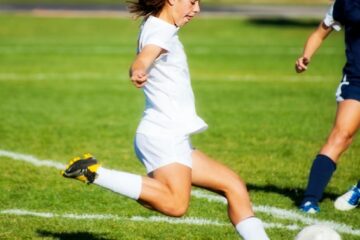




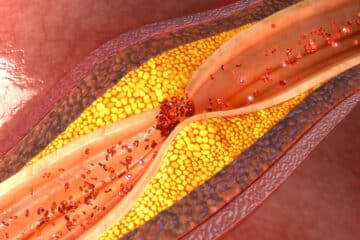
Thank you for article Doctor. I am facing ACL reconstruction shortly and would like your feedback on grafts. I am a 58 year old male, very active, excellent shape, never had any knee injuries. What type of results might I reasonably expect from an allograft at my age. I want the strongest possible knee after surgery and am willing to consider all options although I am a bit leery of the patellar option due to possible kneecap pain.
Thank you,
Tim
HI Tim … Can we start with why you are having the ACL reconstructed? Then we can help determine next steps.
Hi, I’m a very active 15 year old who tore her acl about a month ago and is getting surgery in a week. My dad insists i get a cadaver but I’m not sure which is better to have. I want to continue to play travel soccer and another question is; will i ever be as good as i once was. Was my injury from over use from high school soccer and travel or just simply a wrong turn i made.
I would be VERY cautious about a cadaver graft. You, your dad and your surgeon need to discuss what the research shows about the use of cadaveric grafts in your age group.
I’m too facing ACL reconstruction shortly and would like your feedback on grafts. I’m a 48yr old male in law enforcement assigned to the K-9 Unit. I’m above average in activity level and never had any knee injuries until recently. I’m wanting ACL reconstruction surgery, so I can resume my job and activities without any limitations. I too want the strongest possible knee after surgery. My surgeon has recommended the allograft. After reading several articles on the internet I’m beginning to question if that’s the best option for me. Can you help?
The gold standard is the patella tendon graft from your own body. It is the strongest graft… but for the first two weeks it will hurt more than an allograft.
Hi my 21 year old son tore his acl August 2014 playing football and also had cartilage damage
He had a recon in sept 2014 using his patella tendon
May 2015 his surgeon noticed excess swelling and fluid in his knee and ordered a mcg- bad news – the graft looks like it did not take and he is back to square one – the surgeon wants to hold off any surgery as he feels there is a slight chance it’s just holding as he has stability and has suggested he goes and gives training a real go
Well last night “pop” went the knee
At least we know have a straight answer
We now have to decide if they use his good knees patella tendon in his bad knee or go for the hamstring
– any suggestion ?
Something sounds wrong … autografts simply “don’t take”. I would consider bringing a copy of the X-rays from the first surgery to see a second opinion. You need to know why the first one failed. It could be a technical or surgical issue, it could be many other reasons. But if these grafts are put in well they heal. A second opinion will be worth the time.
Hello,
In 2009 I tore my ACL, and both meniscus, in my right knee. The ACL was repaired using an allograft, and the meniscus was repaired. In 2012 the meniscus repair failed, and a good portion of it had to be removed. In March of this year the allograft repair failed, and now I am having repaired with an autograft.
I am trying to determine which autograft to use, a patellar tendon or Hamstring. If you would be willing to give me your input on the matter I would be very grateful.
I am a 26 year old male who works as an engineer on cargo ships and drill ships. It is a somewhat physically intensive job that requires me to do a lot of lifting, bending, kneeling, and working in uncomfortable/awkward positions. For fun/exercise I play rugby, do MMA, and go to the gym for weight training/cardio fairly often. I am also a Navy Reserve officer, which has a few physical requirements to go along with it as well (physical fitness tests and possible deployments).
I’ve been dealing with knee problems for years now, and I would like the option that gives me the best chance at less long term pain/problems. Also, I’ve been told I’m showing some signs of arthritis, and don’t know if one graft is preferred when dealing with that. At the same time I really enjoy playing the sports I play, and would still like to be competitive in them. I am willing to rehab and stay out of sports for a year if necessary, and can stay off the ship for about 4 months. I have no intention of rushing into demanding activities that might cause more problems.
My Doctor is Dr. Bashir Zikria of John’s Hopkins Sports medicine, and it appears he is leaning towards the Hamstring, which – based on what I’ve been reading – is what I’m leaning towards too. I just want to get as much information, and as many opinions as possible.
Thank you again for any help you are able to give.
V/R,
Adam Klein
Hi Adam …
Autograft is certainly your best option … B-PT-B or hamstring are both effective alternatives. Since you had a large portion of the meniscus removed and are starting to develop OA have you or your surgeon talked about the possibility of meniscal transplantation?